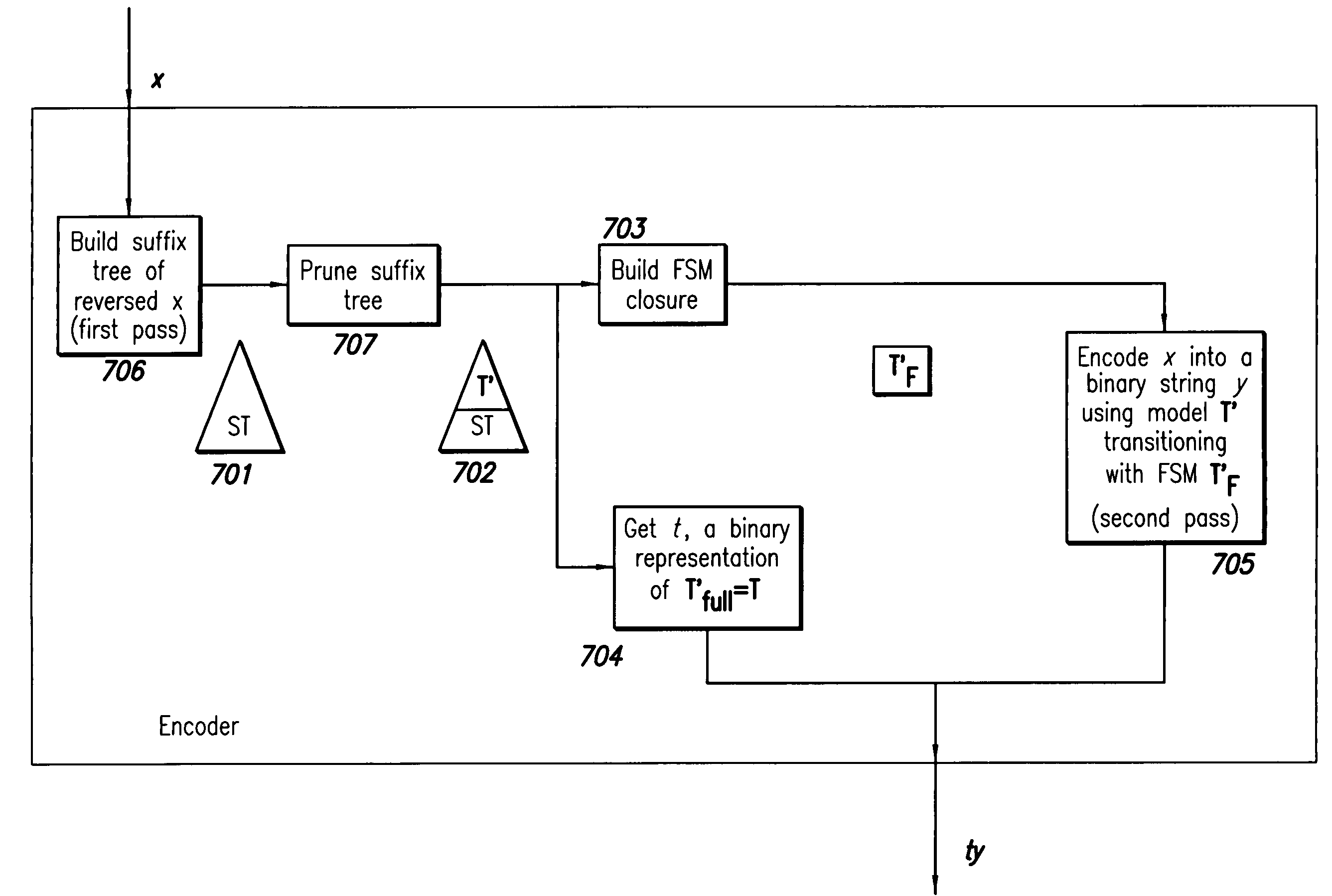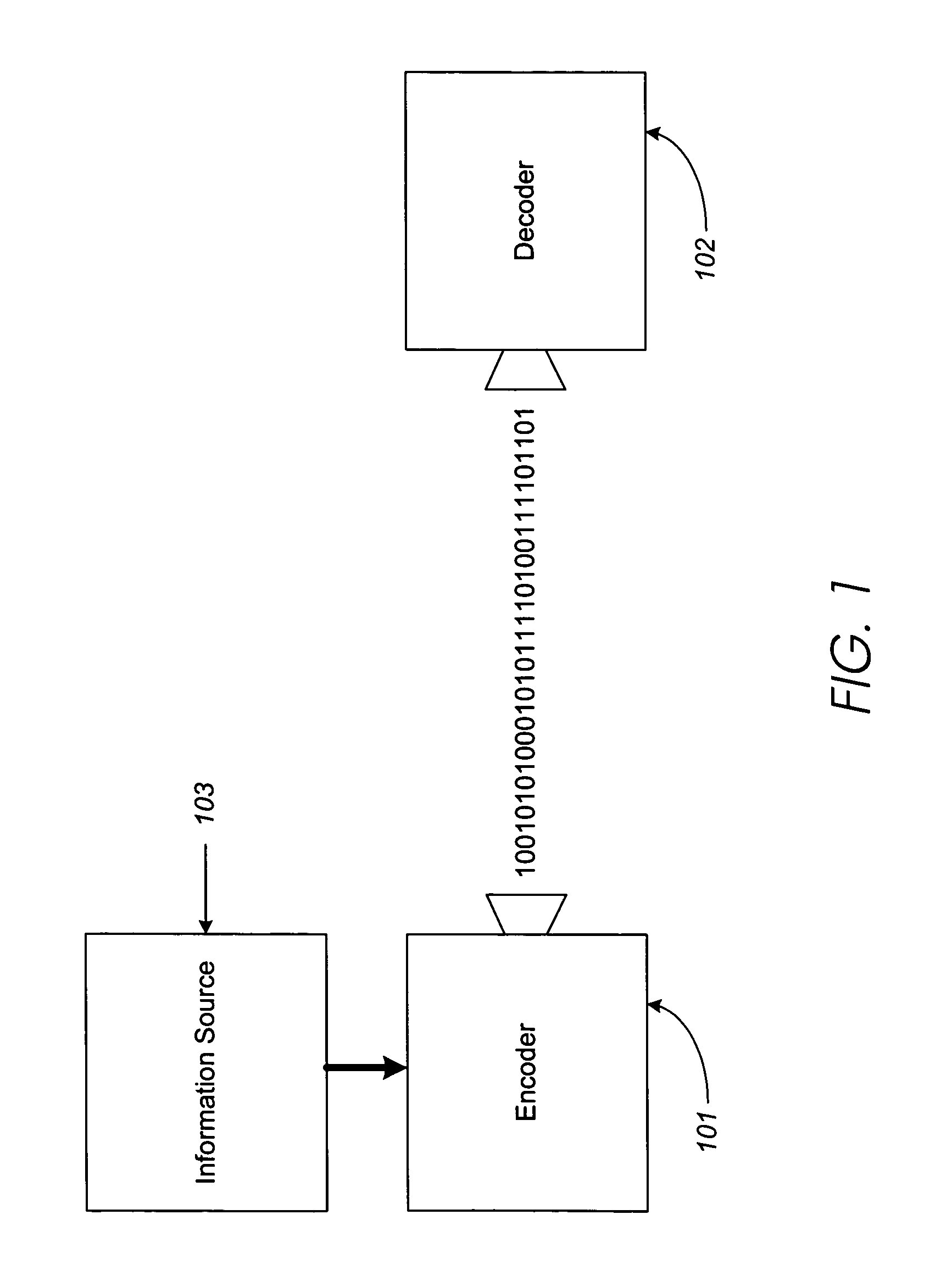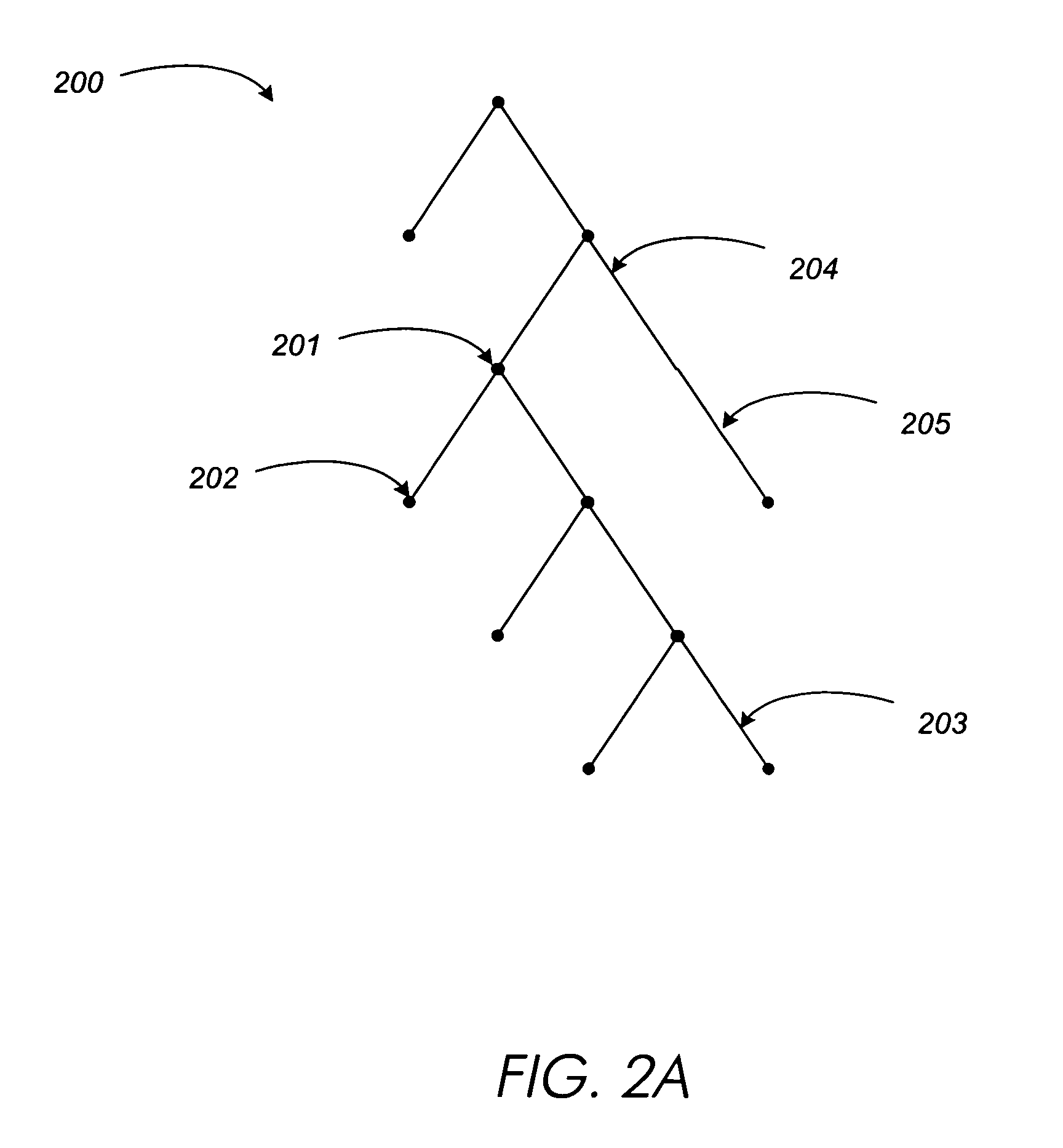Data compression system based on tree models
a data compression and tree model technology, applied in the field of data compression, can solve the problems of unavoidable excess code length over this target code length, cost associated with transitioning from one state to the next state, and inefficient conditional determination of markov model of some order m to the data
- Summary
- Abstract
- Description
- Claims
- Application Information
AI Technical Summary
Benefits of technology
Problems solved by technology
Method used
Image
Examples
Embodiment Construction
[0037]The present design operates by taking a sequence, constructing a Generalized Context Tree (GCT) that models a source that could have emitted the sequence, and optionally refining the GCT by adding leaves and / or internal nodes, where necessary, such that the refined GCT has a finite state machine (FSM) property. Such construction is referred to as computing an “FSM closure” on the GCT, thereby forming a resultant tree, and is described in detail in U.S. patent application Ser. No. 10 / 768,904, entitled “FSM Closure of Generalized Tree Models,” inventors Alvaro Martin et al., the entirety of which is incorporated herein by reference. Intermediate trees may be formed in the process, such as when filling the GCT with leaves and / or internal nodes. The present design may alternately be considered to receive a string, build a suffix tree of the string in reverse order, prune the suffix tree to form a pruned tree, and build an FSM closure of the pruned tree to form an FSM closed tree. ...
PUM
 Login to View More
Login to View More Abstract
Description
Claims
Application Information
 Login to View More
Login to View More - R&D
- Intellectual Property
- Life Sciences
- Materials
- Tech Scout
- Unparalleled Data Quality
- Higher Quality Content
- 60% Fewer Hallucinations
Browse by: Latest US Patents, China's latest patents, Technical Efficacy Thesaurus, Application Domain, Technology Topic, Popular Technical Reports.
© 2025 PatSnap. All rights reserved.Legal|Privacy policy|Modern Slavery Act Transparency Statement|Sitemap|About US| Contact US: help@patsnap.com



